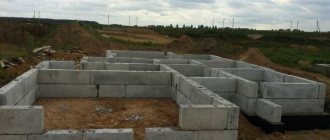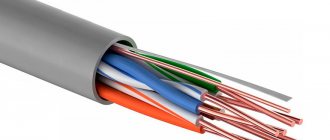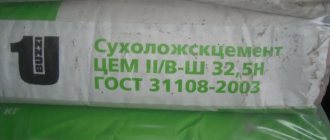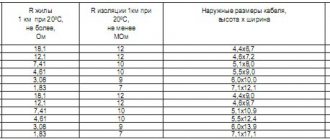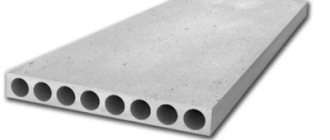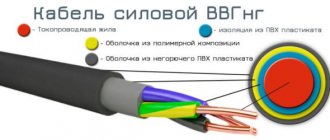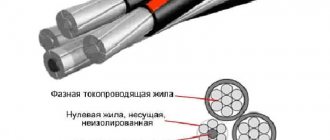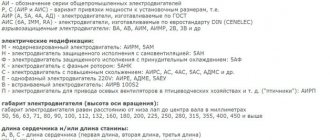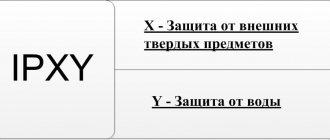MDF, advantages
MDF is wood shavings of finely dispersed fraction, produced at enterprises by grinding and steaming wood. The fibers are dried and pressed under pressure and high temperatures. Next, panels of a certain thickness and size are formed. The board has a medium density and is treated with binders, in particular lignin - a fusible fiber under the influence of heat.
The material is different:
- environmental friendliness;
- high quality;
- uniformity in composition and density;
- naturalness;
- ease of processing;
- high heat and sound insulation qualities;
- the possibility of applying a variety of decor to it;
- environmental safety;
- moisture resistance;
- corrosion resistance, accessibility for any processing;
- resistance to fungi and bacteria;
- hygiene;
- safety at home.
MDF is cheaper and has better mechanical parameters than natural wood; thanks to any processing method, panels with rounded corners and many household and kitchen products turn out beautiful. The material is used for the manufacture of furniture facades, baseboards, wall panels, countertops, profiles, trims, and doors. The density of MDF is 600 – 800 kg per cubic meter. They vary in density, so they differ in abbreviation. HDF has the highest fiber density. The thickness of the top layer is 1 mm, the material is solid and does not depend on the true density of the slab itself. In MDF, the density decreases with depth. When milling, you can understand that the connections between the fibers become weak as the density decreases. If the fibers are poorly bonded, the finish made from this material may have unevenness and delamination in some places. Which can only be corrected by grinding or thermal rolling, but this requires additional time and expense. It is profitable to buy MDF with a higher density, similar to HDF.
The difference between HDF and MDF
Both of these materials have more similarities than differences; their properties are almost identical.
The main difference between HDF is its higher density, which ranges from eight hundred to a thousand kilograms per cubic meter, the same figure for MDF is below 800. Due to the high density, the strength of HDF is also higher, which is why it is thinner HDF board is not inferior in its reliability to thicker MDF. The difference in thickness is almost twofold; high-density board is three or four millimeters thick, and MDF has a thickness of six millimeters.
HDF, advantages
The board has a high density and can be laminated or kashir. Small wood fibers are pressed using hot pressing. The advantages of HDF include:
- homogeneity of the slab structure;
- hard surface;
- special density;
- high dimensional stability;
- high strength;
- excellent processing characteristics.
The disadvantages are not significant. In a damp, humid room, the material is not sufficiently moisture resistant, but the problem can be corrected by treating the slab with a special compound. The composition of the board resembles hardboard; it was first produced in England by hot pressing of paper. Later, the material began to be produced in Canada, but the density was of poor quality. It was only at the beginning of the 20th century that slabs began to become more elastic as a result of their compression in a wet state by heating, and the bonding of wood fibers with polymer resins increased. As a result of mixing and forming substances in a dry environment under the influence of high temperatures and pressure, dense, structured panels are obtained, but when processing wet wood, the density will be much lower. The technical indicators of the slab include: density, thickness, tolerance for these indicators, swelling after 24 hours, rupture, flexural and elastic modulus, humidity, formaldehyde content. When the slab is coated with varnish, it becomes more resistant to household and household items, wine, tea, coffee, water, and chemical detergents. When laminating, a facing film is glued to the surface of the slab, giving the material elasticity and a beautiful appearance. When laminating, melamine resin is applied to the board, softens under the influence of temperature, spreads over the surface, giving it a smooth, shiny appearance.
HDF: main characteristics
To produce HDF panels, the method of pressing wood fibers under pressure is used, followed by coating the material with organic binders. Higher density is what distinguishes HDF from MDF (800-1100 kg/m3). Thanks to this characteristic, the material is considered very reliable and is widely used in various areas of construction, repair and finishing work.
The main advantages of high density panels are:
- High strength of the material, resistance to the deforming effects of physical and chemical factors;
- Convenient for use at home, easy to clean;
- Has sound-proofing and heat-insulating properties;
- Easily amenable to decorative processing;
- Resistant to high temperatures;
- Made from environmentally friendly, safe to use material (wood);
- The formal difference between MDF and HDF is the scope of application of these materials. Due to their high strength, HDF boards are often used for the manufacture of structures subject to heavy loads (floor panels, suspended ceilings);
For high-density boards, processing methods such as lamination and lamination are used. Both of these methods are designed to make the surface shiny and smooth. The wide choice of colors of such slabs allows you to use them as a decorative element when creating an interior.
Where are the slabs used?
The applications for both plates are approximately the same. Used in the furniture industry for furniture production:
- when decorating a slab and coating it with varnish, you can imitate any wood
- in the manufacture of interior doors, back walls for cabinets
- for inserts into cabinet and upholstered furniture
- for covering subfloors
- basics of parquet, laminate
- wall alignment
- hiding communications, ventilation with thin walls
- in trade and exhibition equipment
- in carriage building
- in the manufacture of stands for exhibitions
- in the manufacture of doors, car interior lining
- for picture frames.
The inside of trams, buses, and carriages is trimmed with material. The slabs are used to make packaging and containers for non-food products. Due to their homogeneous structure, the slabs do not have voids or defects, like natural wood. Unlike plywood, the thickness dimensions are stable. The material is easy to saw, drill, bend, and is easy to install; you can give free rein to your imagination when arranging your interior. Suitable for simulating stone or tile when arranging wall panels in the kitchen, it perfectly decorates walls. However, when finishing, you first need to consult with a specialist; perhaps you first need to do the cladding so that the sheets do not sag or bend over time. Decorative facades for furniture are made from HDF, laminate flooring and wall panels are finished. All products made from it are durable, moisture-resistant, and soundproof. The slabs have found use among artists due to their even, smooth and picturesque surface. Any artistic work turns out to be of high quality and complete. Thanks to their excellent adhesion and excellent adhesive properties, the slabs can replace almost all types of roofing; the connections are reliable and durable. Compared to other materials, the slabs are light, there is no load on the roof when installing a roof, for example, HDF. The slabs are suitable for flooring. The material is more stable, durable, dense than, for example, laminate or wooden flooring. In construction today, slabs are used everywhere.
Types of HDF
Sanded slabs . Produced by hot pressing of wood pulp. In appearance they are very similar to MDF boards, the only difference is in density. The compressed material is not initially processed in any way. In further use, it is coated with varnish and paint.
Decorated slabs (their second name is “varnished”). The base is polished products, which are additionally coated with primer paint, then they are given texture and a base color. Using certain rollers, you can imitate the texture of different woods. It turns out to be an ideal material for furniture. This is the industry that uses it the most. Although decorative HDF boards are also ideal for interior doors. You can learn in detail about what MDF panels for walls are from our article.
HDF boards are well coated with almost all common paints. This can be done at home with a roller or brush, but on an industrial scale they use various paint and varnish systems.
You can find out what size corner for MDF panels is needed in this article.
Application
The material is well suited for veneering and lamination. Due to its excellent characteristics, it is widely used in various fields:
- Furniture industry . To reduce the cost of products, hidden parts of structures are made of HDF (bottoms of drawers, back walls of cabinets, etc.). The material is adjusted to the standard size of kitchen countertops from other samples. The material is also used under natural veneer. Perforated HDF panels are also popular in the furniture business (inserts in upholstered and cabinet furniture, trade and exhibition equipment, partitions, etc.).
- Repair of premises and construction . HDF is used for flooring (subfloor and not only), as a base for laminate and parquet. These thin slabs are easy to cover, level walls, and hide communications and ventilation behind them. They are often used for suspended ceilings.
- Carriage building . It is used for interior decoration of train cars and trams.
- Production of exhibition stands (wall elements, partitions).
- Making doors . HDF board is suitable for making door panels.
- Other: picture frames, trade stands, decorative elements, car interior lining, etc.
MDF ceiling panels, price and application features are indicated in the article.
The video explains the difference between HDF and MDF:
Advantages compared to some other materials
From the very name of the material it is clear that it is denser, harder and stronger than other similar plates. Here are a few more of its advantages:
- HDF is environmentally friendly , because there are no chemical additives in its production. Wood fibers contain the natural component ligin. At high temperatures it melts, producing an organic glue that binds the fibers into a dense layer. It turns out that the naturalness of HDF is very close to solid wood. But the structure of the slab is homogeneous, without compactions and voids, which happens in natural boards.
- Same sizes . After all, the thickness and horizontalness of the same plywood can be different in one sheet.
- The material can be easily processed . It can be sawed, drilled, cut. Chips and cracks do not form.
- Affordable price . The cost of HDF is less than the price of natural wood.
You can read more about other types of cladding panels in our article.
It is also useful to read about the dimensions of 16 mm chipboard.
Use in the kitchen
Kitchen wall panels that imitate stone or tile are made from HDF boards. They serve as excellent wall decor and are also suitable for kitchen aprons.
Wall finishing is possible without guides, but in each specific case you need to consult with a specialist. Sometimes lathing is required for the installation of sheets to avoid sagging and bending during operation.
How to properly care for HDF and MDF panels
Both materials quickly deform under the influence of high temperatures and can catch fire when interacting with fire. If you use powders and abrasive sponges when cleaning, for example, kitchen countertops, you can leave scratches on the panels. Kitchen aprons made from panels are often coated with photo printing and graphics to imitate expensive types of wood and stone, which can also be damaged if handled harshly. The panels require proper care, only then will they last a long time and not lose their excellent performance characteristics.
Advantages and disadvantages of panels
The main advantages of HDF include:
- homogeneity of the material, absence of voids and any compactions;
- harder surface and increased density;
- resistance to abrasion and aggressive substances;
- perfect size fit;
- ease of technical processing;
- good sound insulation;
- resistance to corrosion and fungi;
- excellent strength;
- ease of care;
- affordable price.
The disadvantages of HDF boards are insignificant. In damp and humid environments, the material is not endowed with sufficient moisture resistance. To solve this problem, it is enough to cover the panels with special profiles at the ends and at the joints using silicone glue.
MDF material is characterized by the following advantageous features:
- environmental friendliness, naturalness;
- ease of processing;
- good moisture resistance;
- hygiene, versatility;
- resistance to corrosion and fungi;
- safety at home;
- good heat and sound insulation;
- acceptable price.
The main disadvantage of MDF board is its low strength. Another drawback of this material is flammability. Therefore, in order to avoid short-circuiting the electrical wiring in the event of a fire, it is necessary to place the wiring under the panels only in a special corrugation.
What are the differences between MDF and HDF
Both materials are very similar to each other, have almost the same properties and scope of application. They differ only in the difference in density; for HDF it is slightly higher, reaching 800 - 1000 kg per 1 meter cubed. MDF density rarely reaches the 800 kg mark. As the density increases, the strength of the material also increases, so HDF is more durable; a thin HDF sheet is as reliable as thick MDF. The standard thickness of HDF is 4 mm, MDF is 6 - 8 m (2 times more). The slabs are cheaper in price than natural wood, can replace fiberboard, and have excellent chemical and environmental performance. The quality of the material depends on the density indicator, that is, a scalar value in the ratio of body weight and volume. MDF boards may differ in density, so it is better to buy more expensive ones, approximately the density of HDF.
What are the differences
The difference is in density. The density of HDF is from 800 to 1000 kg/m3, and MDF is only up to 800 kg/m3. Due to the higher density, the characteristics of the materials differ slightly. HDF is stronger and more reliable. Decoding fiberboard implies other density indicators.
MDF is produced with a thickness of 6 mm, and HDF can be much thinner - 2 mm, 3 mm, 4 mm (up to 8 mm). In terms of performance, HDF boards are very close to natural wood, although their price is more than half the price. The differences between MDF and laminated chipboard are approximately the same, but the latter also has a different top coating.
What MDF plinth looks like before painting is indicated in this article.
Production
HDF differs from chipboard in that glue is not required to glue wood fibers together, although resins are used. At the same time, HDF does not break or crack. High-density board is made from chip fibers and wood waste. Its construction is much more complex and the board itself is denser than particle board (chipboard) and medium density fiberboard (MDF).
HDF is the thinnest and strongest board of all wood materials
During the production of high-density boards, wood fibers explode under pressure. Hot steam is used to fluff the fibers, which are then pressed in special chambers. The result is dense and homogeneous sheets, the fibers of which are firmly connected thanks to wood lignin - a natural glue that polymerizes under high temperature. To prevent deformation of the boards, moisture is added to the chamber during pressing.
HDF parquet
Famous parquet brands: Kahrs Linnea, Hajnowka parquet board, Meister, Golvabia and Par-ky produce parquet boards based on HDF. Thanks to innovative developments, you can purchase inexpensive parquet of European quality with a top layer of natural wood and a stabilizing layer of heavy-duty fiberboard.
Meister Lindura parquet based on HDF looks as charming as a natural solid board
In the production of parquet, hardened HDF boards are usually used, which do not absorb water and therefore do not deform during seasonal changes in humidity. Like traditional parquet boards, which consist entirely of natural wood, HDF-based veneered parquet flooring is equipped with a glue-free lock that simplifies the assembly of the parquet on the floor.
Experts are confident that the future lies with veneered parquet, which saves finite wood resources, but is superior in strength and stability to conventional parquet made from natural wood. Unlike laminate, which is also made from HDF, the top layer of parquet boards is made of natural veneer. Therefore, each board has a natural wood pattern with fiber texture. The top of the parquet board is covered with several layers of varnish, just like traditional parquet.
Thus, veneered parquet combines the properties of laminate and classic parquet boards: accessibility, practicality and the unique appearance of each plank.
Applications and properties of HDF
HDF is mainly used in the same places as MDF.
Due to its high density and strength, HDF is used as floor panels and subfloors are made from it. Due to the fact that these boards withstand mechanical stress well, they are suitable for a base under laminate or natural veneer.
High-density board is widely used in the furniture industry. Due to its low cost, HDF is often used to make parts and parts of structures that are hidden behind the facade of the housing. For example, this could be the back wall of furniture, the doors of wardrobes, the base of drawers, and so on.
Minimal deviations in thickness make HDF an ideal material for leveling walls and floors. In non-residential premises, suspended ceilings are made from HDF, which allow you to hide communications, ventilation and everything that needs to be hidden from view, for a more aesthetic appearance of the room.
In the carriage and automotive industries, HDF is used as a material for the interior decoration of carriages, buses, trams, etc. In industrial production, packaging or reusable containers for non-food products are made from these wood boards.
HDF is widely used in various fields due to its beneficial properties:
- Environmentally friendly material. No chemical additives are used in the production of boards. Bonding of raw materials provides a natural component that is contained in the wood itself. It is called lignin, under the influence of high temperatures, it turns into an organic glue that reliably holds everything together into a single system;
- The decoding of the name HDF indicates that this material has high density and hardness, which distinguishes it from other fiberboards;
- Uniformity of the structure, which is achieved by production technology, since the raw materials are crushed into a single mass without voids and defects characteristic of natural wood;
- High dimensional stability and good horizontality. This distinguishes HDF from ordinary plywood, which can have different thicknesses;
- Good tolerance to mechanical processing. HDF can be sawed, drilled, perforated, and bent modules can be created, all of which significantly expands the range of applications of high-density fiberboard;
There are two types of HDF boards: sanded and decorated:
- Sanded boards are produced by sanding the surface of finished boards; they are not coated with anything and serve as a good base for paints and varnishes;
- Decorated slabs can come in a variety of colors and textures. They are coated with dispersion colored varnishes in several layers, using different rollers, you can create the texture of different types of wood. The final clear varnish protects against scratches, weather conditions and chemicals.
Now you know what kind of miracle material HDF is, which costs several times less than natural wood, but is no worse in quality, and in some cases even better. HDF is easy and convenient to install; it allows you to give free rein to your imagination and create something new and unusual in your interior. If you are limited in finances, then you can safely replace natural wood with HDF board.
